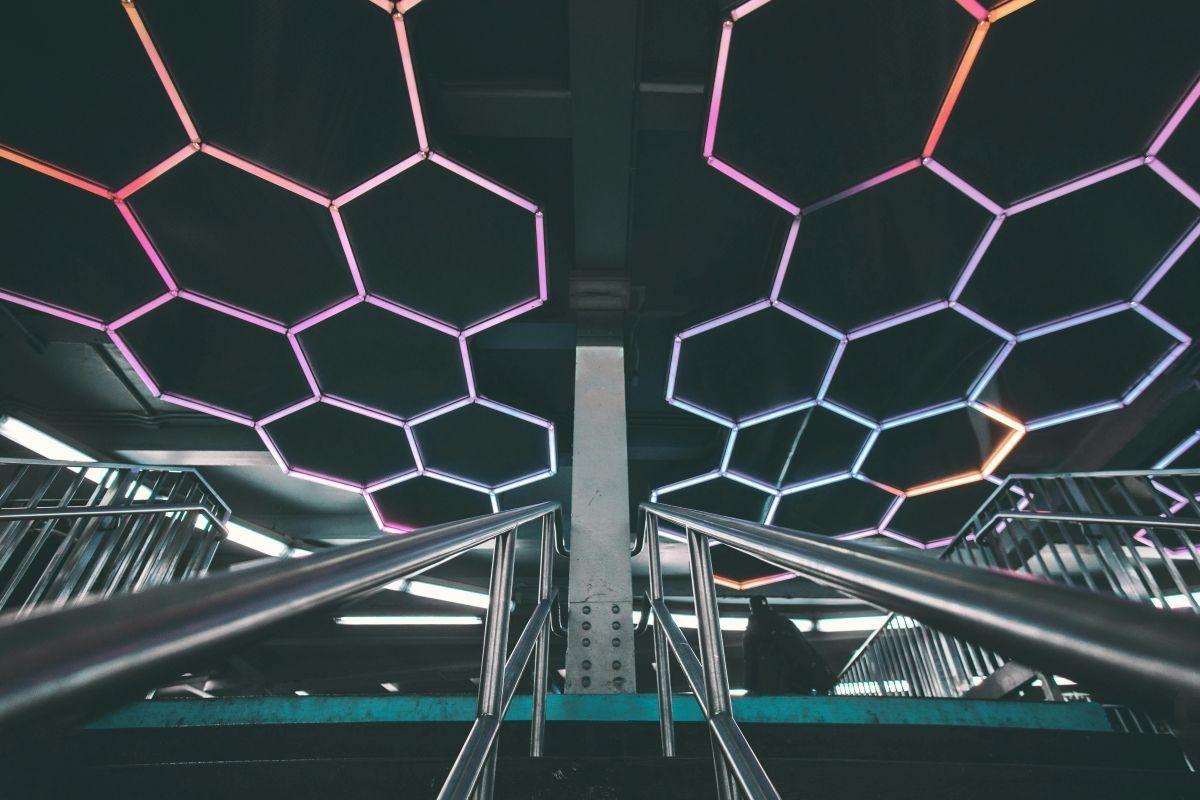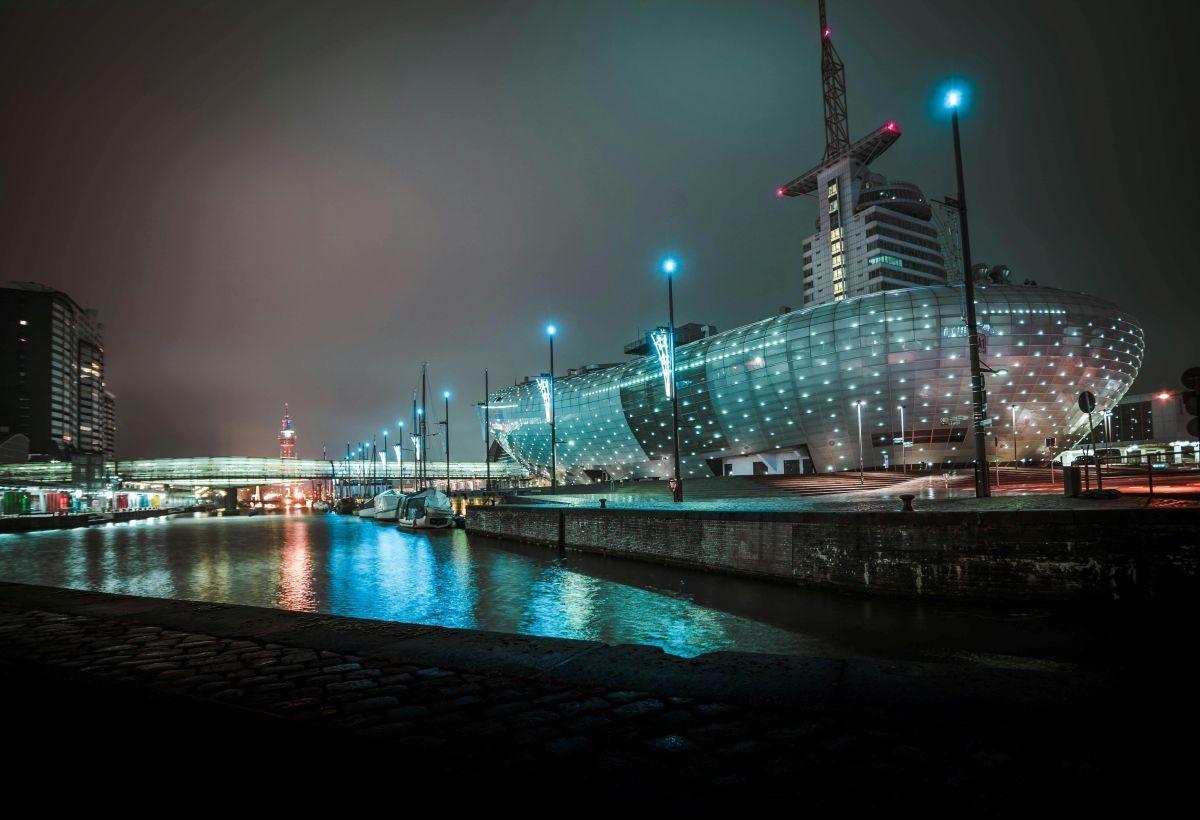
COB LED for high ceiling industrial spaces offers a powerful solution for challenging lighting conditions. These spaces often have ceilings above 20 feet and require high-output fixtures that deliver clear, uniform light. Poor lighting leads to safety risks, low efficiency, and higher costs. As a matter of fact, the right COB LED can improve visibility, reduce energy bills, and lower maintenance. With this in mind, selecting the right option is not just smart—it’s essential.
High-ceiling industrial areas, such as warehouses and production floors, need strong and focused illumination. Regular lights don’t perform well in these settings. As an illustration, when ceilings are 20 to 40 feet high, light must travel a longer distance without fading. Standard fixtures often create shadows or uneven brightness. In contrast, COB LEDs produce a single, concentrated light source. This ensures better light spread with less glare.
Beam angle matters too. A narrow beam focuses light downwards, while a wide beam covers larger areas. For ceilings over 25 feet, choose narrower angles. Of course, higher mounting heights also demand higher lumen outputs—typically 30,000 lumens or more.
When choosing a COB LED, start with efficacy. Look for lights that deliver high lumens per watt. This reduces energy use while maintaining brightness. High color rendering index (CRI) is also important. It helps workers see colors more clearly, which is crucial in detailed work or inspections.
Thermal performance should not be ignored. COB LEDs generate heat, especially at high power. A good fixture includes heat sinks and thermal management systems. These features protect the chip and extend its life. Besides, high-quality materials such as aluminum housings also boost heat dissipation.
Another key point is the IP rating. Dust, moisture, and other elements can damage lights over time. An IP65 rating or higher ensures protection in industrial conditions. Shock resistance is also a plus in busy work areas.
COB LEDs are known for their long lifespan, but long-term reliability depends on more than just quality manufacturing. Proper installation and regular warehouse maintenance are key to keeping lighting systems in top condition.
Over time, dust, moisture, and airborne particles can affect light output and heat dissipation. As a matter of fact, buildup on lenses or housings can reduce brightness and shorten fixture life. A simple maintenance routine—such as cleaning lenses and checking connections—helps prevent early failure.
With this in mind, facility managers should include lighting checks as part of their standard upkeep. Inspecting for flicker, discoloration, or overheating helps spot issues early. This also ensures that safety standards are met and light levels stay consistent across the space. Besides, many COB LED systems now feature quick-access designs, making inspections and servicing faster. While these fixtures are low-maintenance by design, ignoring them completely leads to performance drops.
The COB LED for high ceiling industrial spaces stands out for its strong performance and clean light distribution. Unlike SMD (Surface-Mounted Device) LEDs, which use many small chips, COB packs multiple chips on one board. This creates a single, brighter, more focused beam. In short, this means fewer fixtures are needed to light large areas.
These LEDs also reduce glare and shadows, which improves working conditions. They have longer lifespans, often over 50,000 hours. This is key in high spaces where changing bulbs is costly and difficult. Hence, better durability saves both time and money. Some high-bay COB fixtures also support smart systems. Dimmable drivers, sensors, and remote controls allow for better light control. This leads to more efficient energy use during low-activity hours.
Lighting needs to vary by use. A warehouse requires wide, even coverage. A production floor may need focused task lighting. Loading docks benefit from motion-activated features. Each space demands a different approach.
Power matters. For example, a 150W COB LED suits general high-bay needs. But a 250W or 300W unit may be required for complex setups. Similarly, optics can be swapped for different beam angles or spread types.
Mounting style also affects performance. Some fixtures hang from chains or rods. Others attach directly to the ceiling. Adjustable brackets allow for precise aiming. As an illustration, angled mounting is useful in racking areas.
Environmental conditions also affect choices. High heat, steam, or dust will demand sealed units. In cold storage, LEDs must perform well in sub-zero temperatures. Choose COB fixtures tested for the conditions they will face.

High-output COB LEDs are energy efficient by design, which makes them perfect for urban or industrial settings. They offer strong light output while using less power. This lowers utility bills. Over time, the savings cover the initial cost. Some models qualify for rebates or tax credits.
Another key point is meeting regulations. Regions may require DLC, CE, or RoHS compliance. Certified products ensure safer, greener operations. They also guarantee consistent performance.
To measure return on investment, factor in energy savings, lower maintenance, and fewer replacements. With this in mind, a well-chosen COB LED system can deliver ROI within 12 to 24 months.
Case studies prove this. Large logistics centers have reported 60% cuts in power use after upgrading to high-efficiency COB fixtures. These systems also need fewer replacements, reducing labor and equipment costs.
Technology is moving fast, and lighting is part of that. Many COB LEDs now support smart controls. You can connect them to building systems for automated lighting. Motion and daylight sensors help cut energy use further.
Dimmable drivers allow flexible use. Some fixtures even offer modular designs. If one part fails, it can be swapped without replacing the whole unit. This reduces waste and cost.
Of course, COB LED systems can also integrate with other technologies. In transportation hubs, lights often sync with signage or displays. In automated factories, they work with machine sensors and data systems.
Besides, manufacturers now focus on sustainability. COB LEDs last longer and waste less energy. Their parts are often recyclable. This supports cleaner operations without sacrificing performance.
Choosing the best COB LED for high-ceiling industrial spaces is a smart move. It brings better light, lower costs, and longer service. The right fixture improves safety and work quality. In short, look for strong lumen output, good thermal management, and certified compliance. Check mounting, beam angles, and durability features. Always match your fixture to your specific use case. Hence, a solid lighting setup improves productivity and cuts long-term costs. With this in mind, investing in the right COB LEDs today builds a brighter, more efficient tomorrow.